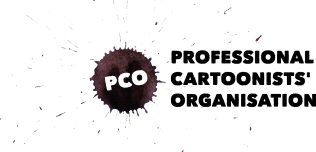Opinion: The curse of Management
In a somewhat acrimonious departure, Richard Ingrams has resigned as editor of The Oldie. In this opinion piece, Bill Stott sees echoes from the latter days of Punch magazine and hopes that cartoonists will not see history repeat itself. Whilst it might sound uncomfortably like a medical examination, there’s interesting stuff coming out of The […]
Special report: 50 years of cartoons in Private Eye
Fans of Private Eye cartoons were in for a treat this week, as editor Ian Hislop and cartoonist Nick Newman took to the stage for two separate events looking back over 50 years of visual humour in the magazine – where they picked out a few favourite gags and discussed the challenge of selecting the […]
The Round-up
Cartoons of Margaret Thatcher – including The Pit and The Pendulum by Stanley Franklin, above, has been showing at Leeds Gallery over the summer. Read a review of the exhibition here. The British Cartoonists’ Association is on the lookout once again for Young Cartoonists of the Year and will now also accept digitally produced artwork (although […]
The Round-up
Kipper Williams – pocket cartoonist for The Guardian, member of Procartoonists.org, and the man behind the excellent cartoon above – has provided the illustrations for a new book of anecdotes from record shops. Read more here. Ian Hislop and Richard Ingrams – editors of Private Eye and The Oldie respectively – will be joined by […]
The Round-up
Above: The Pope wins the lottery and decides to quit his job, in an eerily prescient cartoon by Katharina Greve that appeared in a calendar on the very day of Pope Benedict XVI’s announcement. Journalist Matt Geörg Moore argues that comic strips in print should be given more space and more freedom, despite the decline […]
If you are Oldie enough …
Martin Honeysett writes with news of a London social occasion: The Oldie magazine 20th anniversary party at Simpsons on the Strand was the ideal moment to present to editor Richard Ingrams a PCO award commemorating his services to cartooning for the past fifty years. The award was gratefully received by the editor who then duly sang […]
Oldie cartoon book and exhibition
“Many readers would not admit it but the first thing they do with a magazine like The Oldie is to flick through it to look at the cartoons. If that is true, as I think it is, then the cartoons assume enormous importance.” Richard Ingrams, editor of The Oldie, and former editor of Private Eye, […]
